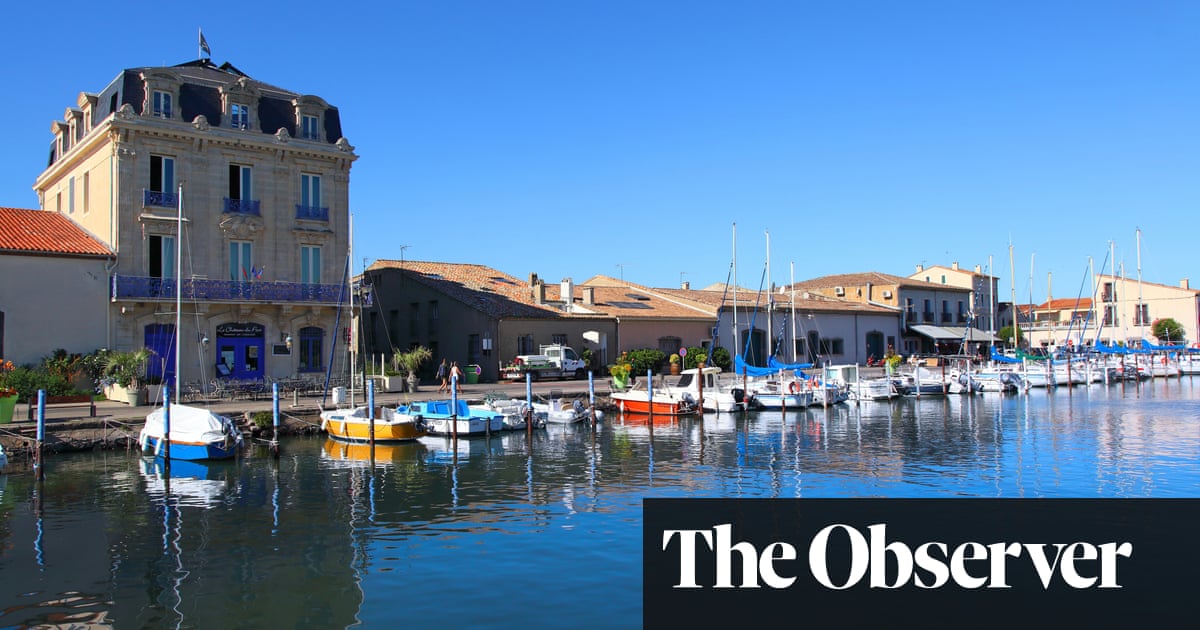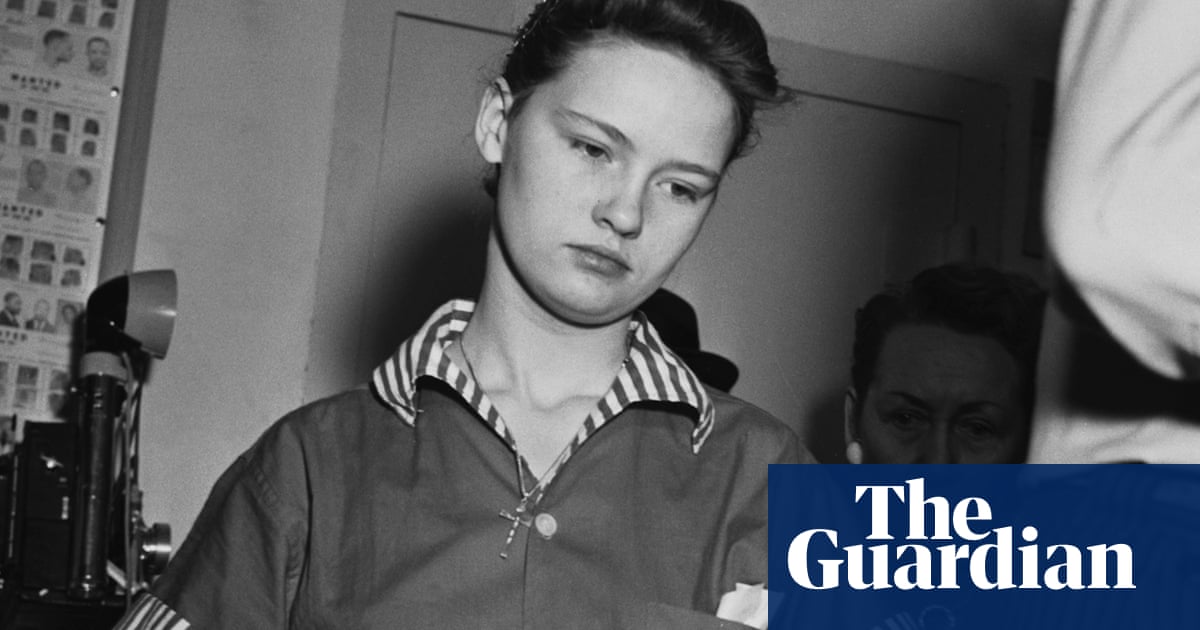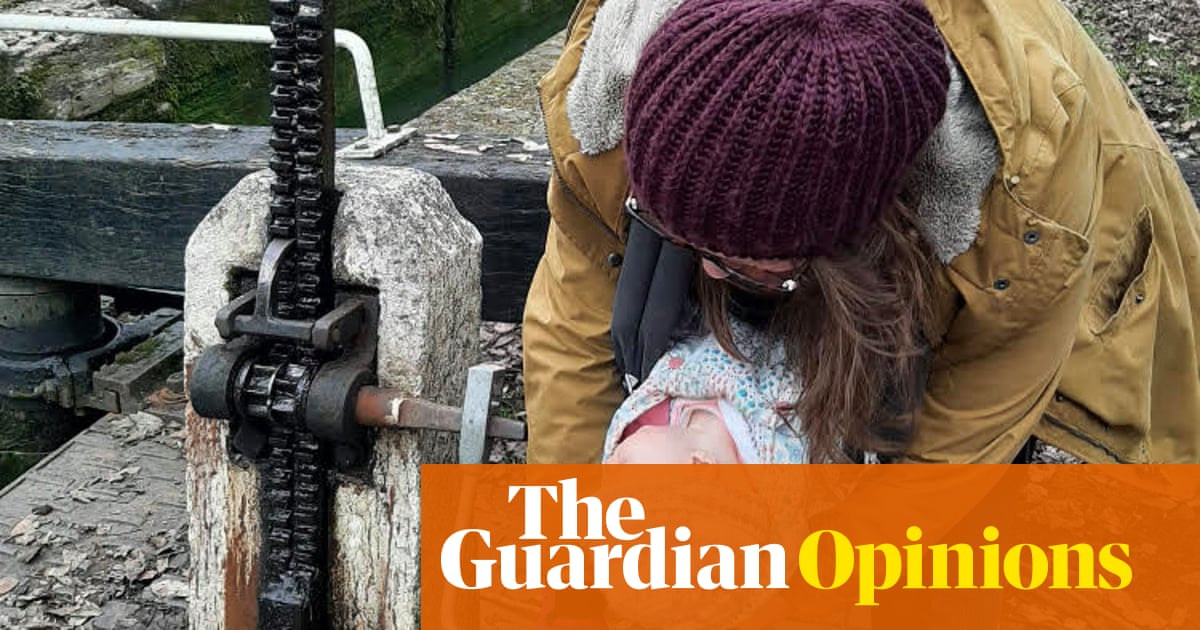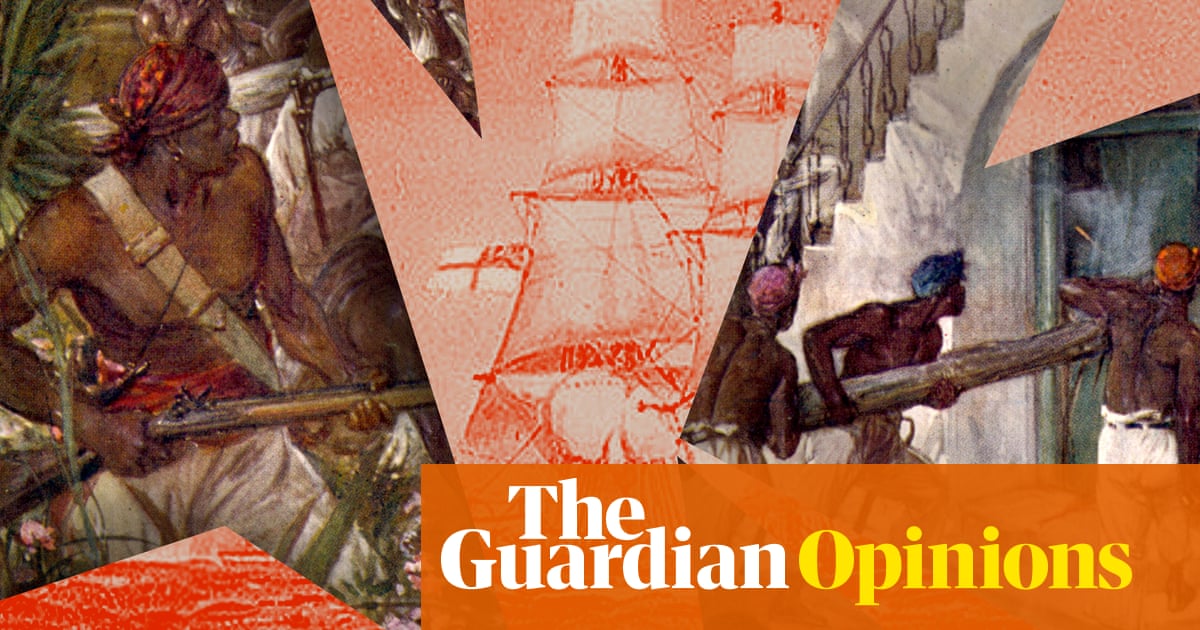
In the centre of the gallery, not far from the entrance when I walk in, hangs a portrait by Rembrandt of his wife, Saskia. She’s young, 23 or so, dressed as a goddess of spring, garlanded with flowers and leaves. Her expression is alert, her mouth open in what seems to be surprise.
Appropriate enough, in a way, given that she isn’t in Room 22 in the National Gallery in London, her usual perch, but 200 miles away in the blossom-strewn hillsides of Powys, mid-Wales. This restorative springtime break at the tiny Oriel Davies Gallery in Newtown is courtesy of the NG’s Masterpiece Tour project, which sends cherished paintings from the collection out to far-flung corners of the UK.
Her stint in Newtown ends next week and in the autumn Saskia will travel up to the Beacon Museum in Cumbria, before making a visit to Carmarthenshire early next year. It turns out to be only the second time the portrait has ever come anywhere near Wales. The first time was when it was stored in a former quarry in the middle of Snowdonia during the second world war.
Saskia has been installed for a few weeks when I arrive, but there’s still a sense that no one can believe their luck. One couple admiring her, locals Kay and Terry Prout, tell me that this is actually their second visit. “First time, we only saw it through the glass door,” says Terry. “We said, ‘Is that really a Rembrandt?’”
The journey began a few weeks earlier, when I was whisked along a gloomy series of corridors deep inside the NG to one of their conservation studios. In front of the painting – leaning against the wall and propped up incongruously on bright-green foam blocks – stood Gracie Divall, the gallery’s exhibition manager for national tours.
The work had come down here so that conservators could check that it was fit to travel and all the paperwork was signed off, she explained; in a matter of days, it would be packaged up and loaded into a travelling crate so that a specialist art handling company could get it on its way.
Everything had to be done right. “We talk about projects like these for anywhere between six to 18 months, and now it’s finally happening,” Divall said, looking at Saskia like a fond but anxious parent. She brightened. “It’s a bit like the night before Christmas.”
The Masterpiece Tours began in 2014, after the gallery’s hugely successful UK tour of Titian’s Diana and Actaeon two years before, the painting having been bought in conjunction with the National Galleries of Scotland. Noting the enthusiasm of audiences outside London, and taking a cue from similar projects being tried out by other museums, curators decided to create something more regular. While the NG has always loaned works for specific exhibitions, often overseas, many paintings in this ostensibly “national” collection had rarely visited galleries in the UK – creating the surreal situation wherein Rembrandts or Monets were more likely to be seen in Vienna or Washington DC than in British towns and cities whose taxpayers fund and co-own them.
“We wanted to try and take down some of the barriers,” says Susan Foister, the gallery’s deputy director when we speak. “People should have access to great art locally.”
The scheme’s first iteration involved one painting spending around six weeks at three regional galleries each year. Now, the NG wants to build multi-year partnerships, working closely with spaces that haven’t borrowed works before to share expertise and select works that might resonate with their visitors. Last year, Oriel Davies and its collaborating galleries took temporary possession of Chardin’s tender 18th-century portrait of a boy, The House of Cards. Once Saskia has done her stint, she’ll be followed by a flamboyantly colourful Tobias and the Angel by the workshop of Andrea del Verrocchio (c.1470-5), which will tour in 2023.
“We’ve had people saying, ‘Ooh, my grandma had a print of this in her house,’” Divall recalled. “But the real picture blows them away. When you’ve only seen a postcard or something on a screen, seeing the texture, the way the light falls, it’s completely different.”
In Wales, Oriel Davies director Steffan Jones-Hughes concedes that having a Rembrandt under his roof is, well, stressful. “We’re not meant to think about value, but it’s kind of astonishing to have this painting here,” he says. “It’s probably worth more than the whole town of Newtown.” He’s been feeling nervous, then? “I’ve been checking the CCTV a lot.”
Mainly, though, it’s a thrill. “Half an hour before it arrives, you get a call, saying that it’s on its way. You’re like, ‘OK, everyone, do up your shoelaces, be on your best behaviour’. But then it’s the most amazing thing when you step back and it’s on the wall. She just glows.”
Oriel Davies had to prove that it could keep the NG’s paintings safe – everything from lighting and security to temperature and humidity are hammered out in customised loan agreements, followed by on-site checks. Equally important, though, was they had great ideas about what they could do. Building on his gallery’s expertise in contemporary work, Jones-Hughes has used Saskia as the anchor for two new exhibitions, both squeezed into his bijou space. One is a series of new portraits (photography, video, paintings); the other focuses on springtime and the mythological Welsh flower goddess Blodeuwedd.
“It’s not just a case of the National Gallery plonking one of their artworks here,” he says. “Everyone was really interested in how we could benefit, and how they could too. It’s a two-way street.”
When the Chardin was in residence, visitor numbers increased by nearly 40%; in a small mid-Wales town that sometimes struggles, hosting works of this calibre is a genuine attraction as well as a point of pride. “It’s not like there’s a photography gallery just across the road and a portrait gallery next door or whatever,” says Jones-Hughes, explaining that having the Rembrandt here has helped them encourage back visitors who stayed away during the pandemic. “It opens up conversations about art. It’s a bit like having a celebrity in town.”
Beaming, he remembers a multi-generational family who came across from Coventry and spent two and a half hours here. “They bought me a Magnum from the Iceland opposite. They just didn’t want to leave.”
As gallery director, has he been spending any alone time with Saskia? He laughs. “Oh, everyone here has, I think. I was talking to Carol Naden, our retail manager, and she was saying she has to pinch herself every day.”
The wider context, of course, is that national institutions are under intense pressure to share their treasures more equitably. Earlier this year, Arts Council England admitted that its funding amounted to about £21 a head for people who live in London, compared to an average of £6 a head elsewhere (a disparity gleefully tweeted by culture secretary Nadine Dorries, whose own constituency is in Bedfordshire). The cultural portion of Michael Gove’s levelling up fund will see as much as £429m spent outside London, on top of £75m in extra ACE investment.
Keenly aware of which way the wind is blowing, museums headquartered in the capital are rushing to collaborate with regional spaces. The NG alone has trialled projects such as 2019’s Artemisia Visits, which saw Artemisia Gentileschi’s Self-Portrait as Catherine of Alexandria crop up in a series of unexpected locations – among them a girls’ school in Newcastle, a GP’s surgery in rural Yorkshire and a women’s prison in Surrey (it travelled in a special sealed frame so there was no risk of damage).
Last month, the gallery announced a “downloadable” exhibition in Cromer, which, inspired by a local project, will see lifesize reproductions of NG paintings appear on the streets of the seaside town.
Says Foister: “Obviously, some areas don’t have much cultural infrastructure, along with social and economic infrastructure. That’s why we chose a gallery in a rural part of Wales as well as one in Cumbria, which is an area of great deprivation.”
Divall agrees that the old museum philosophy – build big shows, and audiences will come, no matter where they live – just isn’t enough any more. “Even if you can get to London, the National Gallery can be an intimidating place: it’s a grand building and a big collection. Where do you start? What do you look at?”
Back at Oriel Davies, which is quietening down for the weekend, I stand for a few moments, enjoying a bit of my own private time. I’ve seen the painting on the National Gallery walls numerous times, but never thought to linger. Here, in a gallery probably not much larger than the artist’s own studio, it’s a more intense and intimate encounter. Alone in a room with a Rembrandt.
At my elbow, another couple is coming through the door; they’re on holiday from south Wales, several hours away, and made a detour after seeing the painting on the local BBC news. “It’s a big thing, having that here,” the man says. “We might never get it again.”
His partner is grinning. “Our son lives in London, and I bet he’s never even seen it,” she says. “So it’s one in the eye for him.”
Rembrandt’s Saskia van Uylenburgh is at Oriel Davies, Newtown until 26 June, then at Beacon Museum and Camarthenshire Museum.












